Peninsula State Park
- February 14, 2024
- 0 comment
Explore Peninsula State Park’s stunning landscapes, hiking trails, and waterfront views. A perfect outdoor adventure in Wisconsin. Located in the heart of Wisconsin, Peninsula State Park offers an unparalleled escape into nature’s embrace. With its breathtaking landscapes that stretch across the horizon, the park beckons outdoor enthusiasts and nature lovers alike.
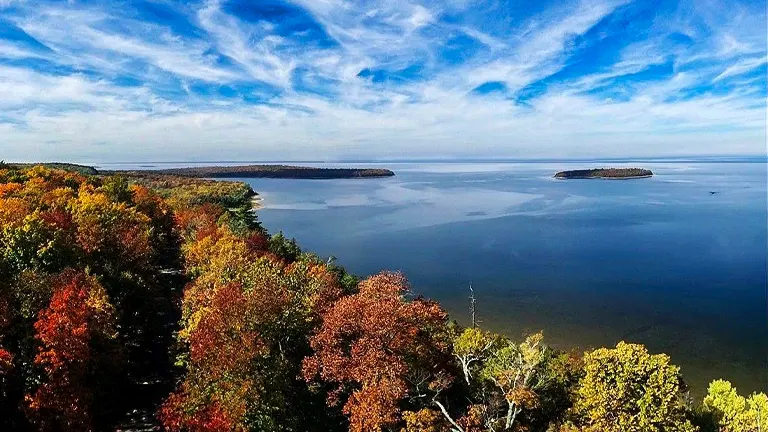
From serene hiking trails that weave through lush forests to the tranquil waters ideal for kayaking and fishing, every corner of Peninsula State Park promises an adventure. Whether you’re seeking a peaceful retreat or an exhilarating outdoor experience, this magnificent park is your gateway to the wonders of the natural world.
Characterizing Features of Peninsula State Park
- Diverse Ecosystems: The park is a haven for various ecosystems, ranging from dense forests and wetlands to rocky shores and open meadows. This diversity is crucial for supporting a wide range of plant and animal species, offering visitors a glimpse into the complexity of natural habitats and the importance of biodiversity.
- Geological Formations: Peninsula State Park showcases stunning geological formations, including cliffs made of dolomite limestone that form part of the Niagara Escarpment. These formations tell a story of the Earth’s past, providing insights into the region’s geological history and the processes that shaped the landscape.
- Forests of Mixed Hardwood: The park’s forests are dominated by a mix of hardwood species, such as sugar maples, American beech, and basswood. These forests not only provide a canopy of shade and beauty but also serve as an important resource for understanding forest ecology, succession, and the role of forests in carbon sequestration.
- Waterfront Views: With miles of shoreline along Green Bay, the park offers spectacular waterfront views that highlight the beauty of Wisconsin’s waterways. These areas are critical for understanding freshwater ecosystems, the dynamics of shorelines, and the challenges of conserving aquatic habitats.
- Bluffs and Overlooks: The park’s terrain is characterized by high bluffs and scenic overlooks, offering majestic views of the surrounding area. These features are not just visually stunning; they provide unique opportunities for studying erosion, sedimentation, and the impact of natural forces on shaping the landscape.
- Natural Habitats for Wildlife: Peninsula State Park serves as a vital habitat for a wide array of wildlife, including deer, foxes, birds, and numerous small mammals and insects. These habitats are essential for conservation studies, wildlife management, and understanding the intricate relationships within ecosystems.
- Wildflower Meadows: Sprinkled throughout the park, meadows of wildflowers bloom in succession from spring through fall. These areas are not only a burst of color and beauty but also play a crucial role in pollination and serve as an example of the park’s plant diversity and the importance of native species in ecosystem health.
History of Peninsula State Park
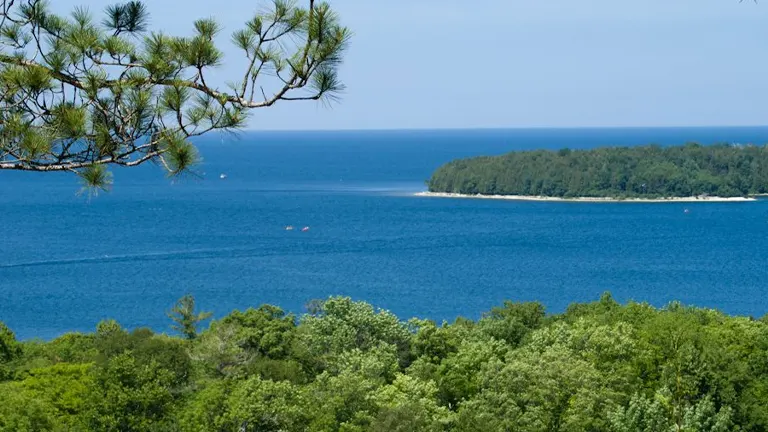
Peninsula State Park, established in 1909, stands as a testament to Wisconsin’s commitment to preserving natural beauty and history. Its creation was spurred by local citizens’ and conservationists’ efforts who recognized the area’s unique blend of cultural and natural resources. Over the years, the park has grown in size and popularity, evolving into a cherished destination for both recreation and reflection, while still retaining its historical charm and significance.
Unique Ecosystem of Peninsula State Park

The park’s ecosystem is a tapestry of forest, shoreline, and aquatic environments, creating a biodiversity hotspot. It supports a variety of species and habitats, acting as a critical refuge for wildlife. The interplay between the park’s geological features and the waters of Green Bay has sculpted a landscape that is as ecologically rich as it is beautiful, showcasing the importance of preserving natural ecosystems.
Location of Peninsula State Park
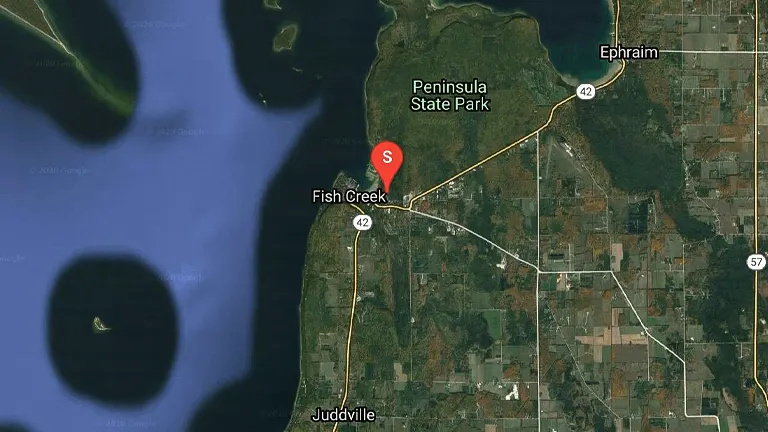
Peninsula State Park, located on the Door Peninsula in northeastern Wisconsin, is a jewel of natural beauty and recreational diversity along the shores of Green Bay. This prime location offers visitors a unique blend of scenic landscapes, from rugged cliffs and serene beaches to lush forests and expansive meadows. Situated within a short drive from the quaint town of Fish Creek, the park’s accessible yet seemingly remote setting makes it an ideal destination for those seeking both adventure and tranquility. Its geographical positioning not only provides stunning waterfront views but also serves as a living classroom for environmental education, emphasizing the significance of preserving natural habitats in a world where such treasures are increasingly scarce.
Here are some specific guides on how to reach Peninsula State Park
- By Car from Green Bay, WI:
- Take WI-57 N toward Sturgeon Bay. Continue for approximately 42 miles.
- Merge onto WI-42 N toward Fish Creek. Follow WI-42 N directly into the heart of Fish Creek.
- Peninsula State Park’s main entrance is just north of Fish Creek. Look for signs directing you to the park entrance.
- From Milwaukee, WI:
- Take I-43 N toward Green Bay for about 100 miles.
- Merge onto WI-57 N via exit 185 toward Sturgeon Bay/Algoma. Follow WI-57 N as it turns into WI-42 N and leads you to Fish Creek.
- The park entrance will be on your right, shortly after you pass through Fish Creek.
- By Air:
- The nearest major airport is Austin Straubel International Airport in Green Bay, WI. From the airport, rent a car and follow the directions from Green Bay to the park.
- By Public Transportation:
- Public transportation options are limited in the area. However, during the tourist season, there may be local shuttle services available from nearby towns to Peninsula State Park. Check local listings and tourist information for the most current schedules and routes.
- Cycling to the Park:
- For those in nearby locations and looking for an adventure, cycling to Peninsula State Park is a great option. From Sturgeon Bay, you can follow County Road S to Egg Harbor, then take County Road E north to Fish Creek. Be prepared for a scenic but challenging ride.
- By Boat:
- Visitors coming from the Door Peninsula or other parts of Green Bay can access the park by boat. There are public boat launches available within the park for day use. Check the park’s official website for locations and regulations.
Conservation and Recreation in Peninsula State Park
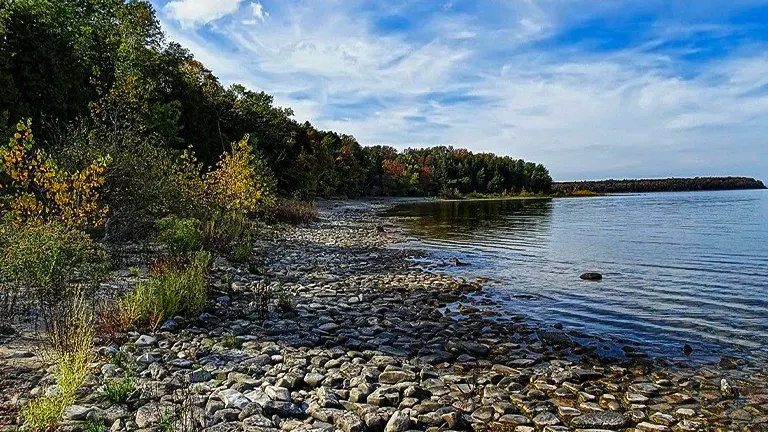
Peninsula State Park serves as a vital example of the balance between conservation and recreation. Its management practices emphasize the preservation of natural habitats while accommodating millions of visitors each year. The park’s success in this endeavor highlights the potential for protected areas to educate the public about environmental stewardship, all while providing invaluable recreational opportunities.
Diverse Vegetation and Plant Species in Peninsula State Park
- Sugar Maple (Acer saccharum): Dominating the park’s forests, these trees are a spectacle in the fall when their leaves turn vibrant shades of orange and red.
- White Cedar (Thuja occidentalis): Thriving in the park’s rocky cliffs, these evergreens add to the park’s lush, green landscape throughout the year.
- Wildflowers: From the trilliums in the spring to the asters in the fall, the park’s diverse habitats support a wide array of wildflowers, adding splashes of color across the landscape.


Fauna in Peninsula State Park
- White-Tailed Deer (Odocoileus virginianus): A common sight in the early morning or at dusk, these deer are an integral part of the park’s ecosystem.
- Bald Eagles (Haliaeetus leucocephalus): The park’s waterways and open spaces provide a perfect habitat for these majestic birds, especially during their nesting season.
- Red Foxes (Vulpes vulpes): These elusive creatures are often spotted by the keen observer, especially near the park’s campgrounds at dawn or dusk.
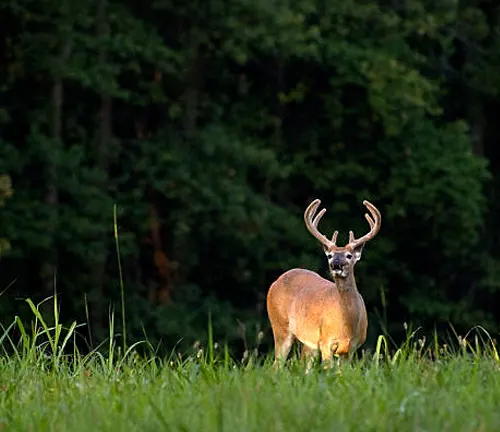
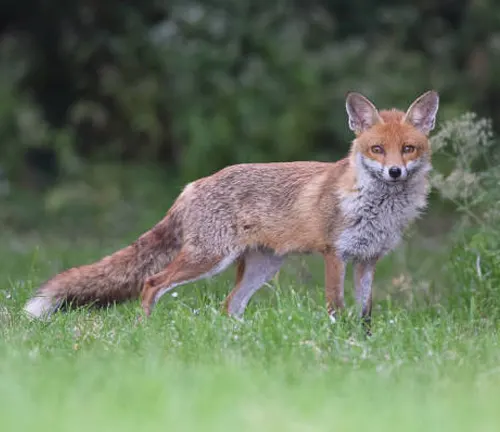
Attractions in Peninsula State Park
Eagle Tower: Reconstructed to offer accessibility to all, Eagle Tower stands as a testament to human ingenuity blending with natural beauty. Visitors can climb the tower for unparalleled views of the park and its surroundings, gaining a unique perspective on the area’s geography and the importance of preserving natural vistas.
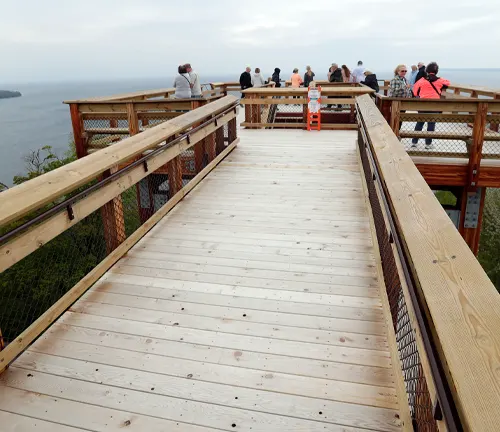
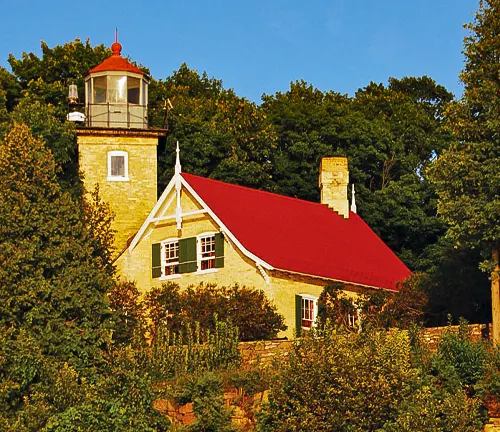
Eagle Bluff Lighthouse: This historic lighthouse offers a glimpse into the maritime history of Door County. Guided tours provide insights into the life of lighthouse keepers and the evolution of navigation technologies on the Great Lakes, emphasizing the lighthouse’s role in maritime safety and cultural heritage.
Nicolet Beach: Named after French explorer Jean Nicolet, this beach is a hub for relaxation and water-based activities. It’s an excellent spot for learning about freshwater ecosystems and the importance of maintaining clean and healthy waterways for recreation and wildlife.
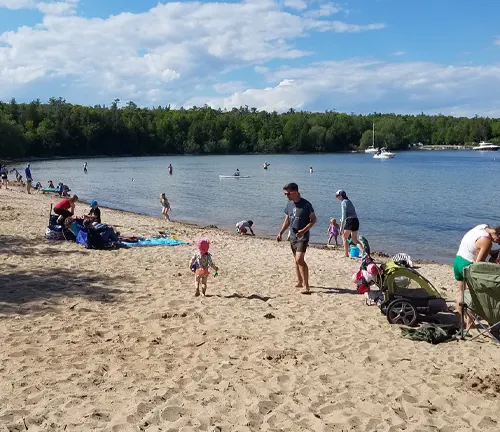
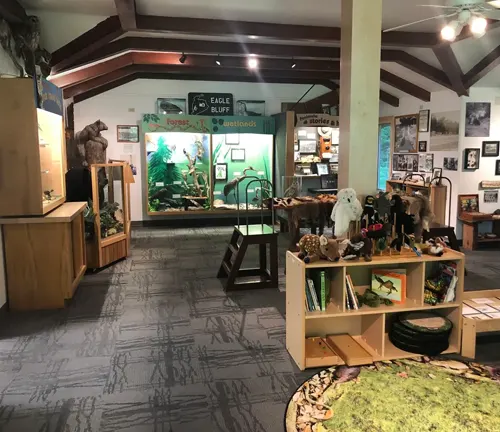
The Nature Center: Hosting educational programs and interactive exhibits, the Nature Center is a focal point for learning about the park’s ecosystems, flora, and fauna. It underscores the importance of environmental education and conservation efforts in preserving natural habitats.
The Peninsula State Park Golf Course: Offering scenic views amidst a challenging layout, the golf course integrates recreation with conservation. It provides an example of how recreational facilities can coexist with natural environments, promoting sustainable practices and habitat protection.

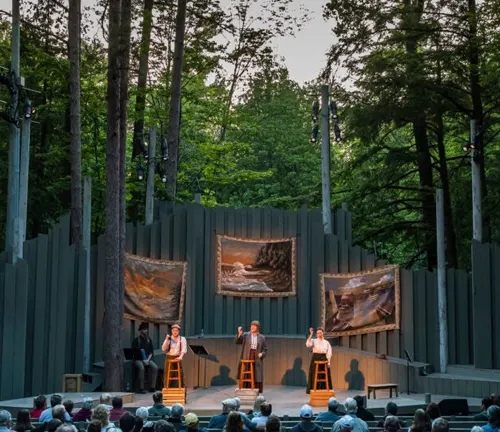
American Folklore Theatre: Nestled within the park, this outdoor theater presents original musicals and plays, highlighting Wisconsin’s rich cultural heritage and the arts’ role in community building and education.
Fish Creek Scenic Boat Tours: Departing from the park, these boat tours offer a maritime perspective on the park’s geography, wildlife, and historical sites, providing a comprehensive view of the area’s natural beauty and historical significance.
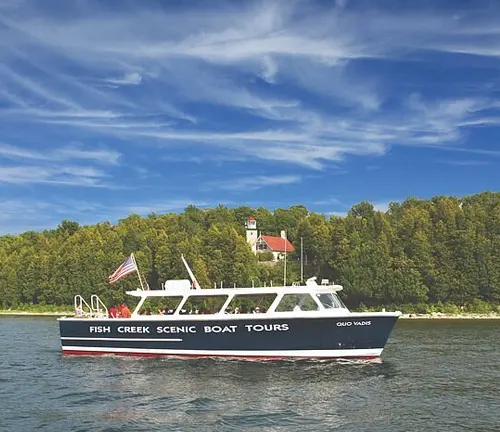
Recreational Activities in Peninsula State Park
- Hiking: With over 20 miles of trails, hiking in Peninsula State Park caters to all skill levels, from serene forest walks to challenging cliffside treks. These trails offer a hands-on opportunity to learn about the local ecosystem, observe wildlife in their natural habitat, and understand the importance of conservation efforts to maintain these natural resources.
- Biking: The park’s extensive network of biking trails, including the popular Sunset Bike Route, provides a sustainable way to explore its diverse landscapes. Biking in the park emphasizes the balance between enjoying natural beauty and preserving the environment, encouraging visitors to minimize their ecological footprint.
- Kayaking and Canoeing: Paddling along the park’s shoreline offers a unique perspective of its cliffs, beaches, and lighthouses. It’s an educational experience in understanding freshwater ecosystems, the dynamics of Lake Michigan’s shoreline, and the significance of water conservation.
- Bird Watching: Home to a variety of bird species, the park is a haven for bird watchers. This activity serves as a peaceful method to connect with nature and learn about the roles different bird species play in the ecosystem, highlighting the importance of biodiversity and habitat preservation.
- Fishing: With access to both Green Bay and inland lakes, fishing in the park is a popular pastime that underscores the importance of sustainable fishing practices and aquatic ecosystem health. It offers a moment to reflect on the balance between recreation and conservation, ensuring the longevity of fish populations and water quality.
- Golfing: The Peninsula State Park Golf Course not only challenges players with its layout but also educates them on the coexistence of recreation and nature. The course is a model for environmentally friendly golfing practices, illustrating how recreational spaces can support biodiversity and habitat protection.
- Camping: Offering various campsites, the park provides a full immersion into the outdoors. Camping is an educational opportunity to practice Leave No Trace principles, fostering a deeper appreciation for natural spaces and the importance of minimizing human impact on these areas.
- Snowshoeing and Cross-Country Skiing: In winter, the park transforms into a snowy wonderland, offering trails for snowshoeing and cross-country skiing. These activities highlight the park’s year-round appeal and the adaptability of outdoor recreation to different seasons, promoting physical health and environmental awareness.
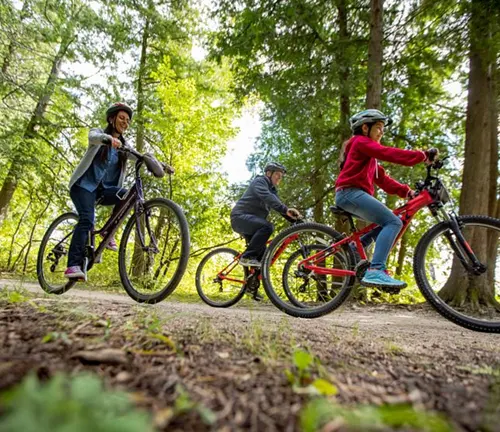
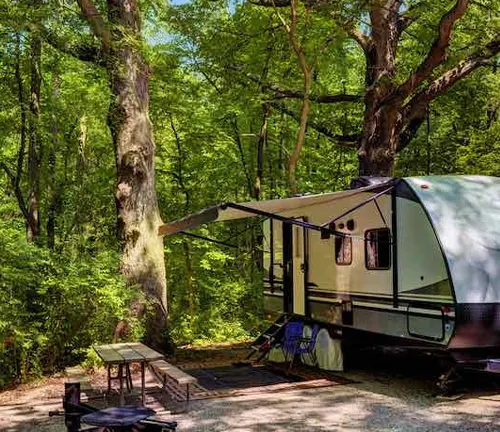
Different Facilities and Amenities in Peninsula State Park
- Campgrounds: Peninsula State Park offers a variety of camping options, from basic tent sites to RV hookups, providing an immersive nature experience. These facilities are designed to minimize environmental impact while maximizing visitor enjoyment, serving as models for sustainable outdoor living and the importance of respecting natural habitats.
- Picnic Areas: Scattered throughout the park, picnic areas offer scenic spots for families and groups to enjoy meals outdoors. These areas are equipped with tables and grills, emphasizing the joy of outdoor dining while promoting principles of leave-no-trace and the importance of keeping natural areas clean and litter-free.
- Eagle Tower: The recently reconstructed Eagle Tower, complete with an accessible ramp, is a testament to inclusive design in natural spaces. It offers all visitors, regardless of physical ability, the chance to experience breathtaking views, highlighting the importance of accessibility in outdoor recreation and the value of experiencing nature’s beauty firsthand.
- Eagle Bluff Lighthouse: This historic lighthouse not only serves as a point of interest but also houses a museum. It provides educational tours that offer insights into the maritime history of the area, the role of lighthouses in navigation, and the lives of the lighthouse keepers, fostering an appreciation for historical preservation within natural settings.
- Nature Center: The park’s Nature Center is a hub for environmental education, offering programs, exhibits, and resources about local wildlife, ecology, and conservation efforts. It underscores the importance of environmental stewardship and encourages visitors to learn about and engage in preservation efforts.
- Biking and Hiking Trails: Well-maintained trails cater to various skill levels, offering safe and enjoyable routes for biking and hiking enthusiasts. These trails not only provide physical benefits but also educational opportunities, as they traverse through diverse ecosystems and feature interpretive signs about the local flora, fauna, and geography.
- Boat Launches: The park features boat launches for those looking to explore Green Bay by water. These facilities support recreational boating and fishing, emphasizing the importance of water safety, responsible boating practices, and the ecological impact of recreational activities on aquatic environments.
- Public Restrooms and Showers: Strategically located throughout the park, these facilities enhance visitor comfort and convenience. Their presence underscores the park’s commitment to providing accessible and environmentally friendly amenities, promoting hygiene and sanitation while minimizing the impact on the surrounding environment.
- Rental Facilities: Offering equipment rentals such as bicycles, kayaks, and paddleboards, the park makes it easy for visitors to engage in various recreational activities without the need to own personal equipment. This approach promotes physical activity, allows for spontaneous adventure, and supports sustainable tourism practices by reducing the need for resource-intensive personal equipment.
Tips and Advice for Visiting Peninsula State Park
- Plan Ahead and Make Reservations: Especially during peak seasons, campgrounds and rental facilities can fill up quickly. Booking your campsite or rental equipment in advance ensures you have the accommodations and gear you need, highlighting the importance of planning in preserving natural resources and ensuring a quality experience for all visitors.
- Respect Wildlife and Natural Habitats: While encountering wildlife is a thrilling part of the park experience, it’s vital to observe animals from a distance, avoid feeding them, and respect their natural behaviors. This practice educates visitors on the importance of wildlife conservation and the role humans play in protecting natural ecosystems.
- Pack Out What You Pack In: To help maintain the park’s beauty and ecological health, visitors are encouraged to carry out all trash and leftovers. This principle of Leave No Trace teaches responsibility for our environmental footprint and the collective effort required to keep natural spaces pristine.
- Stay on Designated Trails: Straying from marked paths can harm fragile ecosystems and cause erosion. Sticking to the trails is not only a safety measure but also an educational lesson in minimizing human impact on natural landscapes and preserving the park for future generations.
- Prepare for the Weather: Weather in Wisconsin can be unpredictable. Dressing in layers and bringing rain gear ensures comfort and safety during your visit. This advice underscores the importance of being prepared for nature’s unpredictability and fostering a resilient, adaptable approach to outdoor recreation.
- Explore Beyond the Highlights: While Eagle Tower and Nicolet Beach are must-sees, the park offers numerous lesser-known trails, quiet coves, and scenic overlooks. Venturing beyond the popular spots can lead to a deeper connection with the park’s natural beauty and a more personal experience of discovery and exploration.
- Participate in Educational Programs: The park’s nature center and ranger-led programs offer insights into local ecology, conservation efforts, and the park’s history. Engaging in these programs enriches the visit, providing a deeper understanding of environmental stewardship and the significance of protected natural areas.
- Practice Water Safety: Whether swimming, kayaking, or boating, it’s crucial to follow safety guidelines and be mindful of water conditions. This tip emphasizes the importance of respecting the power of nature, the necessity of preparation, and the value of making informed decisions in outdoor activities.
- Respect Quiet Hours in Campgrounds: Observing quiet hours ensures that all campers can enjoy the tranquility of the park and the natural sounds of the environment. This practice teaches the importance of community respect, shared spaces, and the serene experience nature offers away from the hustle and bustle of daily life.
- Leave Wildlife and Plants Undisturbed: Refrain from picking flowers or disturbing wildlife habitats. This action reinforces the value of conservation, the beauty of observing nature as it is, and the role every visitor plays in protecting biodiversity.
Recommendation
For first-time visitors, a hike to Eagle Tower is highly recommended. The newly reconstructed tower offers breathtaking panoramic views of the park and beyond, making it a must-see destination within the park.
Conclusion
Peninsula State Park is a microcosm of nature’s vast beauty and diversity. Whether it’s the quiet solitude of a forest hike, the thrill of spotting wildlife, or the joy of a family picnic by the lake, the park offers something for everyone. It stands as a beacon of natural preservation and recreation, inviting all to explore and appreciate the great outdoors.
FAQs
- What is the best time of year to visit Peninsula State Park?
The park is beautiful year-round, but the peak season is from May through October when the weather is most conducive to outdoor activities. - Are pets allowed in Peninsula State Park?
Yes, pets are welcome in most outdoor areas of the park, provided they are on a leash no longer than 8 feet. - Is there an entrance fee for Peninsula State Park?
Yes, a vehicle admission sticker is required for entry, available for daily or annual purchase. - Can I camp overnight in the park?
Absolutely, Peninsula State Park offers several campgrounds, but reservations are recommended, especially during the summer months. - Are there any guided tours available?
Yes, the park offers guided tours of Eagle Bluff Lighthouse and naturalist-led programs throughout the summer. - What are some of the recreational activities available?
Hiking, biking, kayaking, golfing, and swimming are just a few of the activities visitors can enjoy. - Is fishing allowed in the park?
Yes, fishing is permitted in designated areas, following Wisconsin’s fishing regulations. - Are there any facilities for visitors with disabilities?
The park strives to be accessible to all visitors, offering adaptive equipment and accessible facilities.
Peninsula State Park, with its expansive greenery, scenic shoreline, and rich history, offers a picturesque retreat into nature. From hiking and biking to exploring lighthouses or enjoying a play under the stars, it’s a place where memories are made and the beauty of Wisconsin’s great outdoors is celebrated. Whether you’re seeking adventure or serenity, Peninsula State Park is a destination that invites you to connect with nature’s splendor.

Benjamin Brooks
Forestry AuthorGreetings! I'm Benjamin Brooks, and my journey over the past 15 years has revolved around the fascinating realms of content creation, expertise in snow clearing, and the intricate world of lumberjacking and landscaping. What began as a simple curiosity about the natural world and heavy machinery has evolved into a passionate profession where my love for crafting words intertwines seamlessly with my lumberjacking and garden skills.

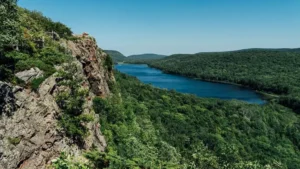

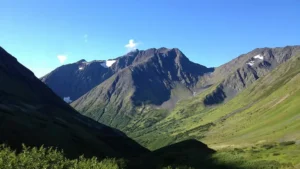
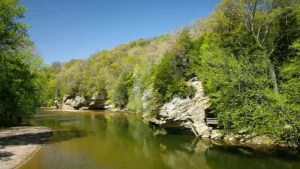
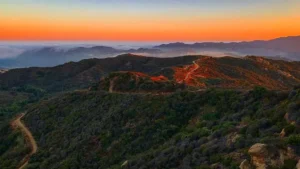
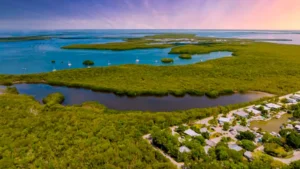
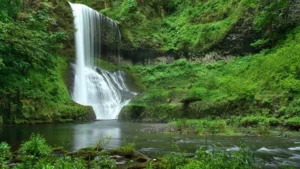
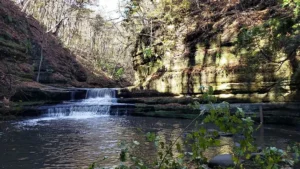

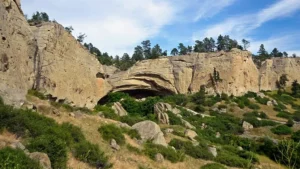
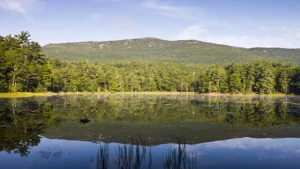

Leave your comment